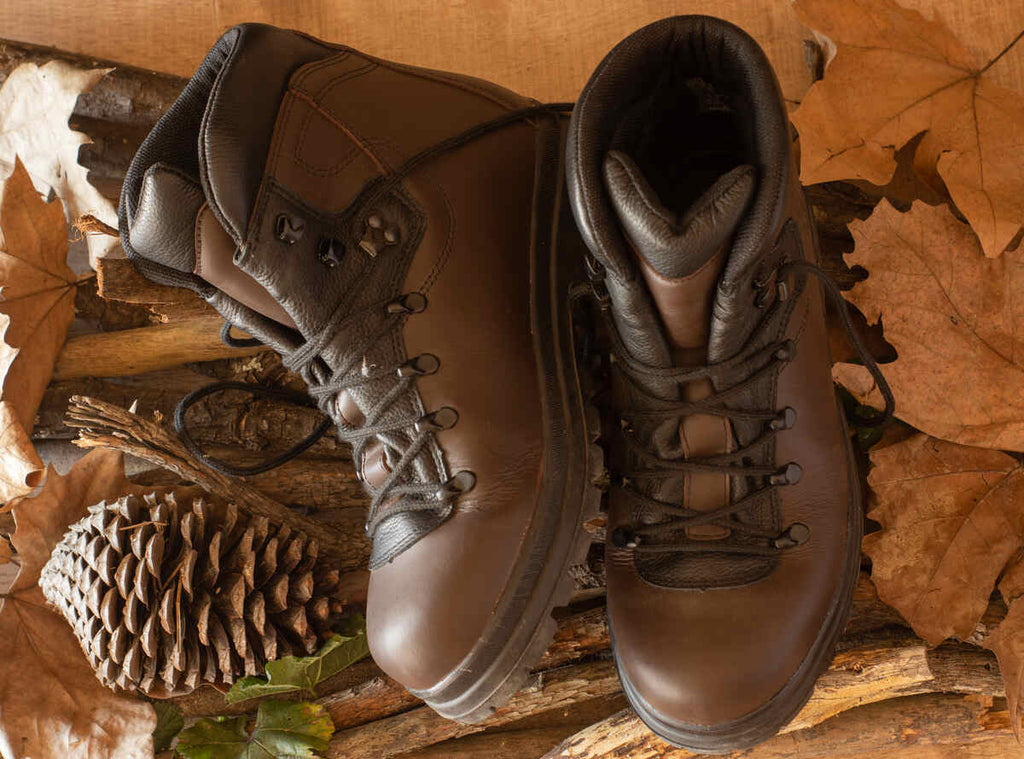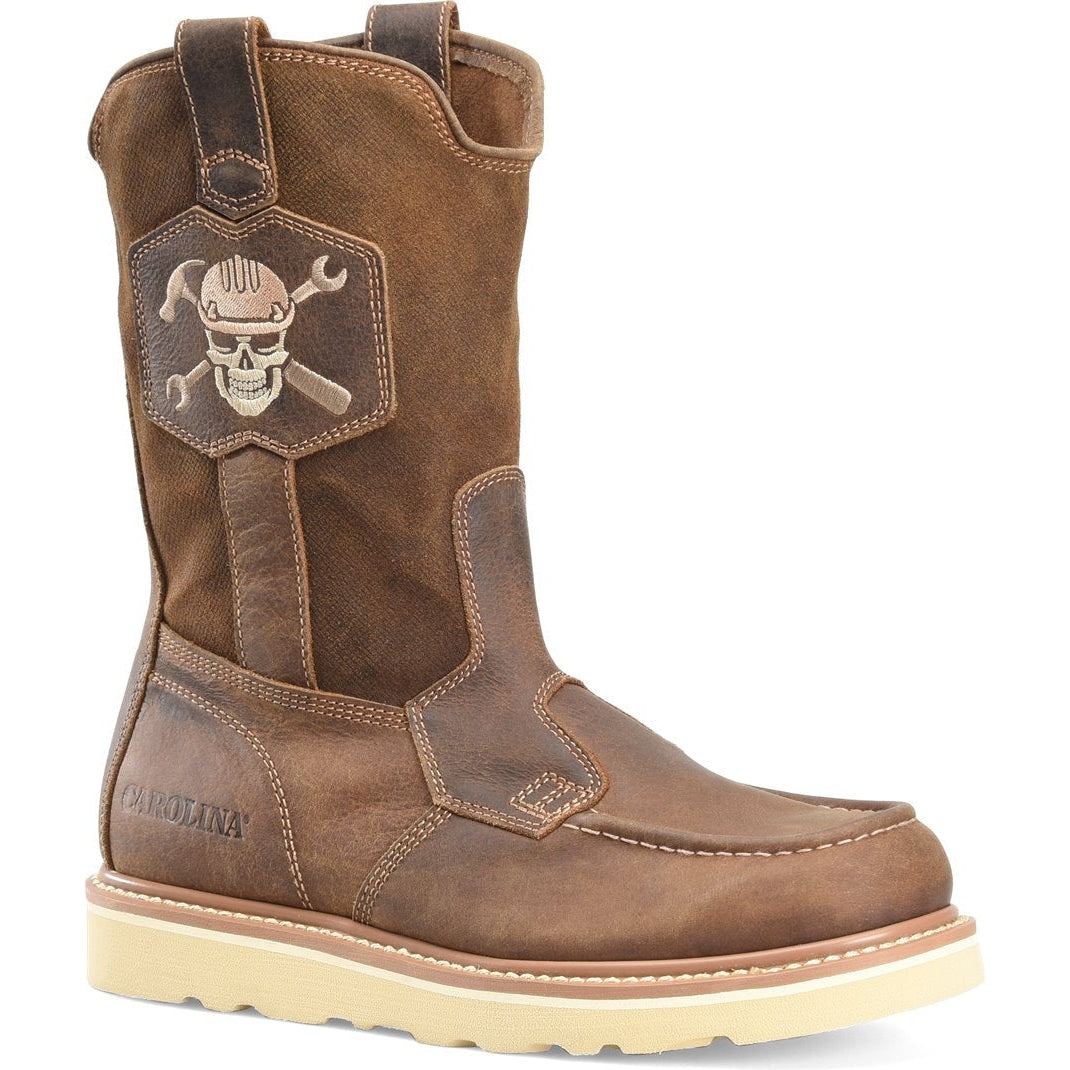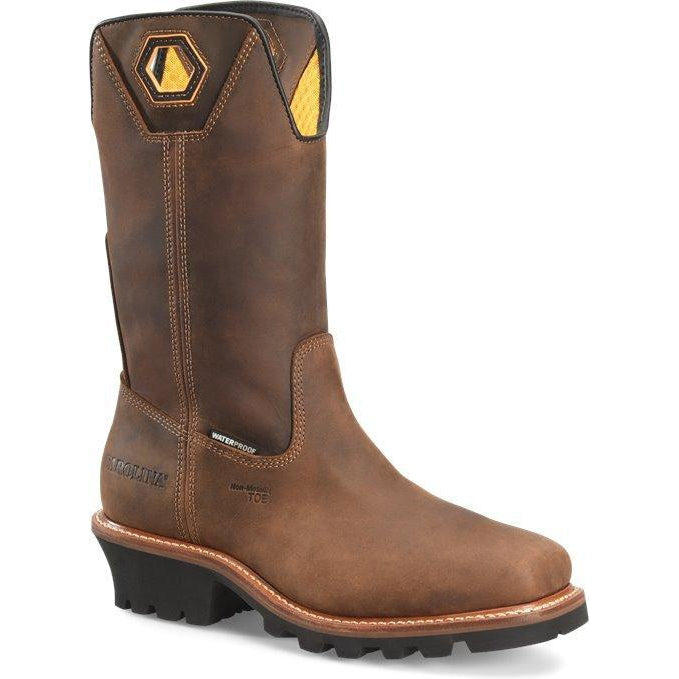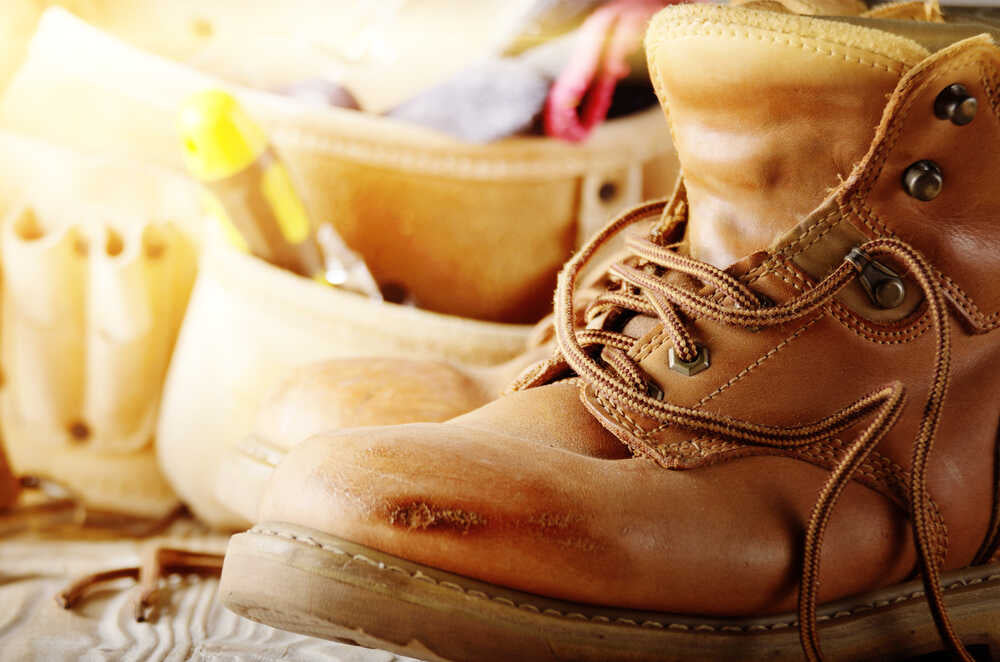Know the feeling of your feet aching after a long day on the job site? Well, you're not alone. People across industries struggle with foot pain or discomfort, especially if they're not wearing the right pair of boots.
As a hardworking individual, you know that your work boots are more than just footwear. They’re your everyday companions, your partners in productivity, and sometimes, your saving grace when navigating treacherous terrain. But what exactly makes a work boot comfortable?
Today, we're diving into the science behind comfortable work boots to help you understand the innovations and designs that make them feel like a dream on your feet while keeping you safe and supported. What can we thank for those snug, secure, and pain-free steps?
Let's talk about the technology, designs, and materials that contribute to the modern-day comfort you can count on.
The Evolution of Boot Making: From Humble Beginnings to Ultimate Comfort
Comfortable work boots, the 101 of our daily grind, have come a long way from their primitive ancestors, those bag-like animal skin wraps tied around feet in ancient times. Early work boots, back from when 12-hour shifts were still around, were all about leather – sturdy, weather-beaten, and ready for action, but with a focus on durability rather than comfort.
The evolution of work boot designs was driven by a desire to address common issues such as sweaty or cold feet, as well as foot pain and fatigue experienced by workers. Inspired by the needs of laborers in various industries, boot companies began to innovate, incorporating new materials and techniques to enhance comfort and functionality and accommodate different needs with a range of footwear types.
As technology advanced, manufacturers started to experiment with cushioning materials, ergonomic designs, and specialized features tailored to specific occupational needs. Today, work boots are the result of centuries of refinement, blending traditional craftsmanship with cutting-edge technology to deliver all-day comfort and protection for workers in diverse industries, with a broad range of options and styles to suit anyone's needs.
[prc-collections-carousel]
The Importance of Wearing Comfortable Work Boots
Comfortable work boots aren’t just about coziness — they're essential for your overall health. Improper footwear is not only a dread to put on but affects how you walk and can lead to a heightened risk of injury and even serious medical complications in the long term.
From plantar fasciitis to arch pain, many workers suffer from a range of common foot issues due to wearing ill-fitting or traditional choice boots that don't focus on comfort. Investing in comfortable work boots isn't just about immediate relief; it's also about your long-term well-being.
- Musculoskeletal Strain: Wearing uncomfortable boots can increase strain on muscles and joints, contributing to musculoskeletal injuries over time. They can also affect posture, leading to back, hip, and knee pain as your body compensates for the discomfort in your feet.
- Foot Deformities: Prolonged use of ill-fitting boots may result in foot deformities such as bunions, hammertoes, corns, and calluses, causing chronic discomfort and mobility issues.
- Circulation Issues: Tight or constrictive boots can impede blood flow, increasing the risk of circulation problems like varicose veins, deep vein thrombosis, and even peripheral neuropathy.
- Skin Irritations: Friction and pressure from uncomfortable boots can cause blisters, calluses, and chafing, making you more susceptible to skin infections and irritation, even wounds, ulcers, and other serious complications.
- Impact on task Performance: Foot pain isn't just uncomfortable; it can also hinder your physical task performance and increase the probability of injury. Studies have shown that wearing comfortable work boots can lead to a significant decrease in pain levels, including thigh pain and ball of foot pain.
What Makes a Pair of Boots Comfortable? The Science Behind Modern-Day Footwear Comfort
Today, comfortable footwear has become non-negotiable, and thus, work boots come in various boot styles and boot designs, each catering to specific needs and preferences. But why are work boots so comfortable? What features contribute to this level of comfort that we've come to expect?
There are a few key areas of focus that make for a comfortable boot.

1. Boot Materials Matter
The foundation of comfort often lies in the materials used. Advancements in material science have revolutionized the way we design and manufacture boots. One critical aspect is the use of lightweight materials. Heavy boots can be uncomfortable, especially when you're on your feet all day or during strenuous activities. Lightweight materials, such as modern synthetic materials or leathers, minimize fatigue and allow for agility.
High-quality, breathable materials like leather work boots allow for proper ventilation, preventing moisture buildup and keeping your feet dry. Leather also molds to the shape of your feet over time, providing a personalized fit. A full-grain leather boot is still a favorite, offering style and functionality and providing stability without sacrificing comfort. Some modern boot styles incorporate carbon fiber for added durability and support.
For cold weather on the job, insulated boots keep your feet warm and cozy even in extreme temperatures, while waterproof boot materials keep them dry in wet conditions. The outsole (the part that contacts the ground) also plays a crucial role in comfort. Common outsole materials include traditional rubber outsoles, which offer exceptional traction and shock absorption. Plus, they're versatile and suitable for various terrains.
- EVA (Ethylene-Vinyl Acetate): EVA is lightweight, flexible, and provides cushioning. It’s commonly used in athletic and casual shoes.
- TPU (Thermoplastic Polyurethane): TPU combines durability with flexibility. It’s often found in hiking and work boots.
- Vibram®: Known for its ruggedness, Vibram® outsoles excel in challenging environments while keeping your feet comfy.
2. Ergonomic Considerations: Fit, Stability, and Support
Your feet are unique – no one-size-fits-all here. And the perfect fit isn’t just about your comfort but also your health and safety. Imagine trying to go through your workday with rigid, inflexible boots that feel like medieval armor and don't fit your foot right on top of it. The shape of the shoe matters, too. If it doesn’t contour well to your foot, it can lead to pain, blisters, and even deformities and injury.
Comfortable working boots strike the perfect balance: they protect you from ankle injuries and sharp objects without weighing you down as bulky footwear does while molding to the shape of your feet, offering the necessary grounding and support.
And that's where the construction of footwear comes into play – a key factor in comfortable work boots.
- Boot Shaft Types: The boot shaft is very important because it can significantly impact your comfort and reduce plantar flexion. It also affects your joint range and can cause limb injuries.
- Arch Support: Boots with proper arch support distribute weight evenly, reducing strain on the arch and preventing discomfort. Different boots are designed with varying levels of arch support to accommodate various foot shapes.
- Weight and Flexibility: Comfortable work boots strike a balance between providing adequate support and allowing for natural movement. A flexible sole also promotes ease of movement and reduces fatigue during extended wear for comfort underfoot.
- Toe Box and Heel Cup Design: A roomy toe box allows your toes to splay naturally, preventing cramped toes. Meanwhile, a well-designed deep heel cup ensures a secure fit and minimizes unnecessary movement, preventing blisters.
3. Safety Features
Last but not least, let's talk about the level of protection. After all, comfort and occupational safety go hand-in-hand. Having a pair of safety boots along with other necessary protective gear has become non-negotiable at modern worksites – it's where the biggest hazards lurk. From EH-rated footwear for electrical hazard protection and electric circuits to safety shoes with protective features that reduce the risk of puncture or crush injuries, safety features are a crucial component of comfortable work boots.
So, extra safety is the norm, and steel toes have been around for a while, but in order to be safe and comfortable at the same time, you need lightweight work boots that will do their job protecting your bones from injury but won't hurt your feet or weigh you down. After all, they're two sides of the same coin, so you should never sacrifice comfort for safety or vice versa.
Luckily, today, you don't have to. From steel-toe boots and composite toe footwear to more lightweight options made from non-metal materials and even plain-toe work boots, there's an array of options when it comes to safety features.
The C in Comfort: Innovative Technology Transforming Comfortable Work Boots
[prc-collections-carousel]
From breathable insulated boots to athletic shoe-inspired designs, manufacturers are constantly finding new ways to enhance footwear comfort without sacrificing performance and durability, working shoulder-to-shoulder with scientists to explore new materials and their properties.
Some notable advances in material science, technology, and innovative comfort features include:
- High-Tech Fabrics: Materials like Gore-Tex used for linings provide breathability, waterproofing, and insulation, keeping feet comfortable in various conditions. Polyurethane materials have led to improved insoles, making boots less taxing to stand in for extended periods. Innovative textiles, such as temperature-regulating fabrics, can adjust to external conditions, keeping feet warm in cold weather and cool in heat.
- Memory Foam: Insole materials with memory foam adapt to your foot shape, offering personalized cushioning. They also reduce stress injuries like tendonitis, plantar fasciitis, and stress fractures.
- Nano-Coatings: These enhance water and stain resistance, keeping your boots looking fresh and comfortable. They're used for chemical-resistant footwear, too.
Choosing the Perfect Pair: Considering Your Comfort Needs
Here are a few tips to keep in mind the next time you shop work boots:
- Shoe Size Matters: Don't underestimate the importance of getting the right shoe size. Even the most comfortable work boots can increase the risk of cuboid pain and lateral malleolus pain if poorly fitting.
- Occupational Tasks: Think about the specific demands of your job when selecting the most comfortable work boots. Certain features may be essential for your comfort and safety.
- Trial and Error: Experiment with different boot styles and brands to find the one that best suits your feet and minimizes levels of pain.
How Can I Make My Work Boots More Comfortable?
Start by getting a pair of comfortable work boots. However, if you're stuck with an ill-fitting pair causing you discomfort but can't afford to get another at the moment, here are a few tricks from our book you can give a go:
- Insert Cushioning: Invest in cushioned insoles or gel inserts to provide additional support and comfort for your feet.
- Adjust Lacing: Experiment with different lacing techniques to achieve a snug but not too tight fit, ensuring proper support without restricting circulation.
- Break Them In: Wear your boots around the house for short periods to gradually break them in and allow the materials to mold to your feet.
- Use Moisture-Wicking Socks: Opt for moisture-wicking socks to keep your feet dry and reduce the risk of blisters and discomfort.
- Consider Orthotic Inserts: If you have specific foot issues like plantar fasciitis, consult a podiatrist about custom orthotic inserts tailored to your needs.
- Stretch Them Out: Use our leather boot stretching guide to stretch out tight spots and alleviate pressure points.
- Regular Maintenance: Keep your boots clean and conditioned to maintain their integrity and prevent stiffness or cracking that could contribute to discomfort.
Make Comfortable Work Boots Your Priority
When it comes to your comfort and safety on the job, don't underestimate the importance of wearing comfortable work boots. We owe a debt of gratitude to the brilliant minds behind the scenes – scientists and boot manufacturers – for crafting work boots that not only get the job done but also feel like walking on clouds.
From reducing foot pain and discomfort and risk of injury to enhancing physical task performance, the right pair of boots can make all the difference. So, next time you're shopping for work footwear, remember to prioritize comfort and functionality to keep you going strong through those long workdays.
Remember, choosing the right pair of boots involves considering a combination of factors, from materials and cushioning to support and design. However, taking the time to find the most comfortable pair will allow you to focus on the tasks at hand with peace of mind.
When you're ready to shop for comfortable work boots for men and women, we leave you spoilt with choices that match your needs. Browse our collections to find yours.






